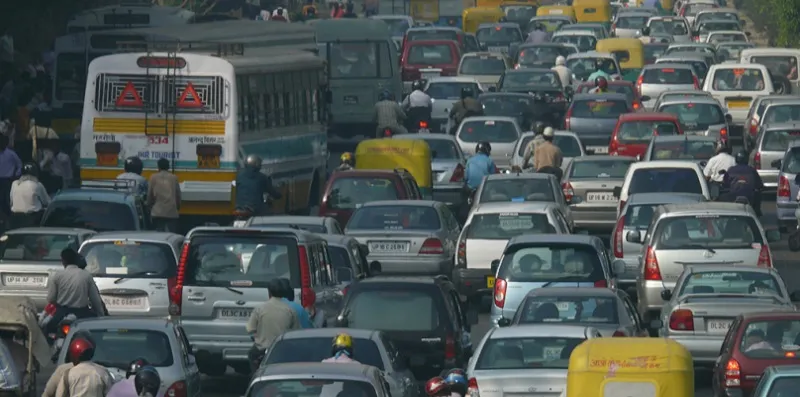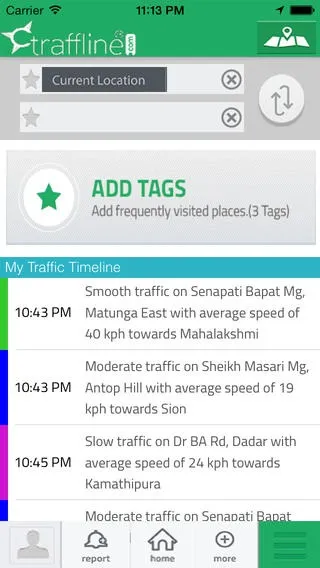When it comes to helping commuters avoid traffic snarls, Traffline is one up on Google
During the Mumbai monsoons last year, roads were flooded as usual, and commuters had to navigate their way to homes and offices through chaotic traffic. But unlike the previous years when floods rendered the city helpless, this time, millions of Mumbaikars got help from Traffline, a live traffic information provider for daily commuters.

In the first week of rains alone, Traffline was handling over 1 million requests from their platforms (web, mobile app, twitter, etc) and was trending for two weeks in a row. This solution, built by Mumbai-based Birds Eye Systems and released in early 2012, was the first to offer live traffic information to the Indian masses. Apart from sporadic traffic information providers like radio stations, there were no other providers in the market.
In September 2012, Google entered the traffic information field in India, but Traffline was one up on its Goliath by offering services independent of maps and an internet connection. This platform-agnostic capability also gives them an edge over smaller competitors like Waze, Sabka Traffic and Happy Paths which have come up since then. Currently, Traffline operates in Mumbai, Delhi and Bangalore.
The inception point
Brijraj Vaghani and Ravi Khemani began toying with the idea back in 2008 while they were working in the IT industry in the US. In the West, people were used to accessing traffic information before hitting the road. It was time to introduce this concept in India too, they felt. Both Brijraj and Ravi have Masters in engineering from the University of Missouri, Kansas City -- enough ammunition to tackle their goal of creating an Intelligent Transportation System. So they returned to India in 2009 and started up Birds Eye Systems.

Traffline is their first product. It acts as an agent allowing commuters to check traffic conditions of the city anytime. Birds Eye Systems has a patented algorithm that captures live movement on the streets through probes with GPS installed on them. “These probes are vehicles or individuals on the road, traffic police of a particular city or public transport vehicles. Data is beamed through satellites in microseconds to our servers where it is crunched across parameters like congestion time, vehicular movement, etc. to come up with real time information on a given traffic situation and how to avoid it,” Brijraj explains.They have three sources for data: “The basic information comes from moving probes on the road that are installed with GPS systems. Accident and event information is collected from field teams. Our followers also report information,” adds Ravi.
The users get real time updates of the best routes to travel, traffic jams to avoid, and road events to escape. They can estimate travel time from one point to another and check alternative routes to steer clear of potential traffic delays. They can also call the Traffline centre to get instant updates. The app also allows users to share traffic information and alternative routes with loved ones in trouble.
Traffline is available on multiple platforms. Android and iOS apps are available on Google's Play Store and Apple's App Store. It can also be used through Traffline.com and mobile website m.traffline.com.
Teething troubles
Initially, they had trouble convincing users to trust the information. Reliable traffic information live was a new concept. “But this problem solved itself with users trying and testing the app and realizing that the information was true, after all,” Ravi recalls.
Also, they wanted to habituate commuters to check traffic conditions before getting out. However, in a couple of months they noticed that only once they are on the road do users in India check Traffline. They have solved the problem by introducing a service that pushes relevant traffic updates to the user during selected times everyday before they leave home or office.
“The initial capital for the first two years came from our personal savings and also by doing certain side-bar projects in the IT domain,” Brijraj says. Later, they were funded by the Centre for Innovation, Incubation and Entrepreneurship (CIIE) and the Indian Angel Network. Recently, they raised funding from the Matrix Partners.

With a dedicated team of 20, Traffline is currently at the growth and expansion stage. They have just come out with a new version and are aiming to roll out Traffline along the National Highways, and tier-2 and tier-3 cities in India. “With this expansion, we project a user population of 15-20 million by 2018, out of which an estimated 60% would be active,” Brijraj and Ravi say.







